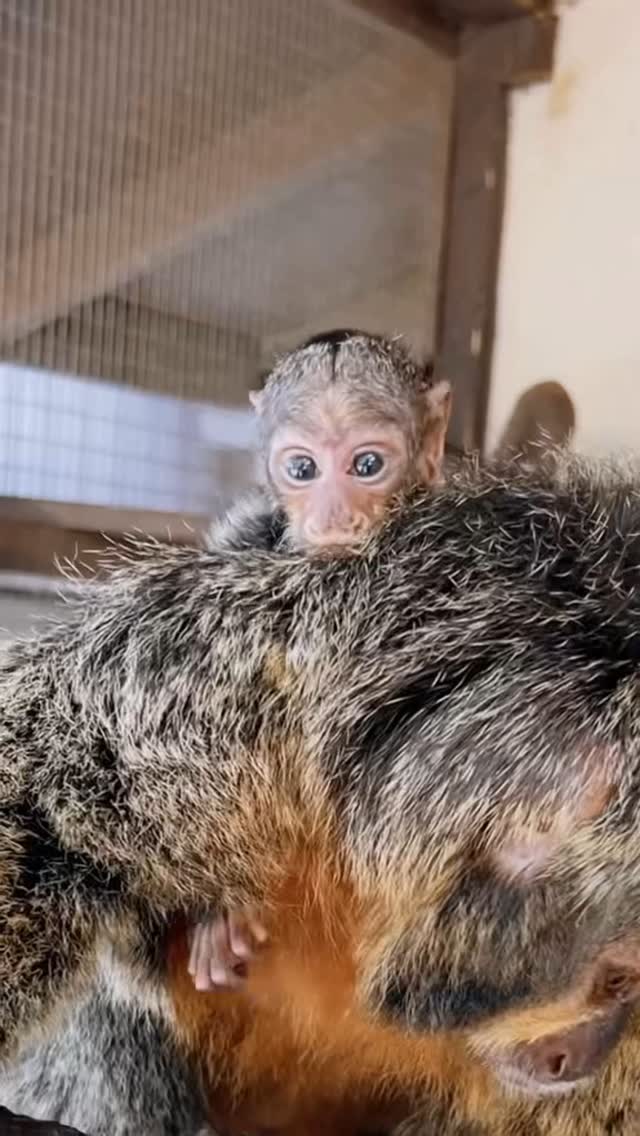- Introduction to white-faced saki monkeys and their significance within the Small World zoo exhibit.
- Insights into the breeding and nurturing behaviors of saki monkeys, emphasizing parental roles and social structure.
- Discussion on the conservation status of white-faced saki monkeys and associated challenges faced by wildlife protection efforts.
- Overview of zoo management practices, focusing on the ethical and sustainable care of small primates.
- Exploration of the educational role of zoos in promoting wildlife awareness and conservation advocacy.
White-faced saki monkeys, the residents of Small World, are captivating creatures drawing intrigue and admiration. Originating from South America, particularly the Amazon Basin, these primates are distinguished by their striking black fur contrasted with stark white facial hair in males. Females, however, lack this distinctive feature, being uniformly dark. This sexual dimorphism not only assists in identification but also plays a role in the social dynamics of these animals.
The Small World exhibit offers a unique glimpse into the daily lives of these monkeys, notably with the enchanting presence of a baby saki monkey. Observing these young primates offers valuable insight into the species’ lifecycle and behaviors. From an early age, the baby’s existence revolves around its mother, clinging to her fur for security and mobility. The mother, in turn, showcases a remarkable blend of tenderness and vigilance, ensuring the offspring’s safety and social integration. As the baby matures, interactions with the father and other group members broaden, highlighting the collective approach to rearing young that is characteristic of saki monkeys.
The breeding behaviors and parental roles of white-faced sakis are reflective of their complex social structures. Unlike many primates, these monkeys exhibit a level of monogamy, with pairs often forming long-term bonds. This bond facilitates a cooperative parenting style, where both partners engage in nurturing and protective duties. They navigate the forest with both agility and care, emphasizing the species’ adaptability and resilience. Such adaptability is crucial for survival in their natural, often-threatened habitats.
Conservation of white-faced saki monkeys is a pressing issue faced by wildlife advocates. Declared as near threatened by the International Union for Conservation of Nature (IUCN), these primates are susceptible to habitat loss due to deforestation, hunting, and the illicit pet trade. Conservation efforts strive to rectify these threats through habitat preservation, legal protection, and breeding programs. Zoos like Small World play a pivotal role in these endeavors. By providing sanctuary and participating in breeding programs, zoos contribute to stabilizing and potentially increasing saki monkey populations.
Care within zoos must be meticulously managed, ensuring the physical and psychological wellbeing of these primates. Environmental enrichment, dietary regulation, and veterinary care are core aspects of responsible zoo management. Zookeepers at Small World are tasked with creating environments that mirror the saki monkey’s natural habitat, an undertaking requiring scientific expertise and genuine care. Such management not only benefits the monkeys but also educates the public, fostering an appreciation for biodiversity.
Zoos serve as catalysts for wildlife conservation education. Exhibits featuring animals like the white-faced saki monkey engage audiences, sparking curiosity and concern for the natural world. Through interactive displays and informative sessions, zoos can disseminate critical messages about conservation challenges and encourage proactive measures among visitors. By observing and learning about these animals, people are often inspired to support conservation efforts financially or through advocacy, playing a vital role in safeguarding biodiversity.
The presence of baby saki monkeys at the Small World exhibit underscores a narrative of hope and rejuvenation. These primates, with their engaging behaviors and complex social structures, exemplify the beauty and intricacy of natural ecosystems. The role of zoos in facilitating these insights is irreplaceable, positioning them as key players in both education and conservation.
Advances in zoology, alongside international cooperation, are essential to ensure the survival of saki monkeys in the wild. By understanding the issues and actively participating in conservation efforts, humanity can aid in the enduring preservation of these and many other threatened species. Through continued dedication and sustainable practices, we can look forward to a future where the white-faced saki monkey thrives both within and beyond the boundaries of zoo environments.
*****
Source Description
Have you seen the baby saki monkey at Small World yet ?
Our family of white-faced saki monkeys have their hands (and backs) full with this one.


